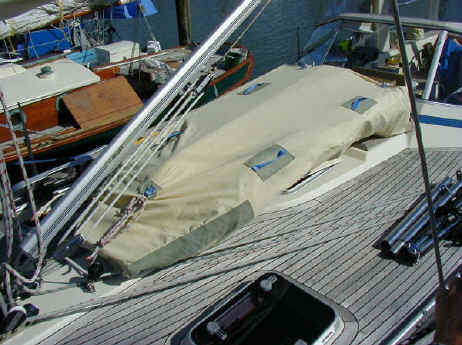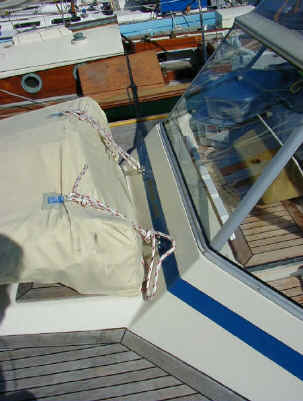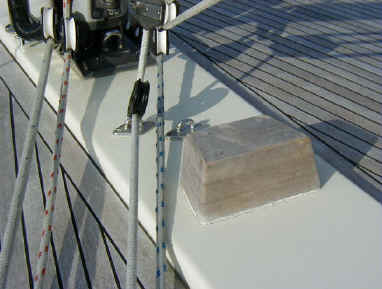Stowing the Dinghy on Deck

Before heading north to Alaska I had to solve the problem of what to do with our RIB dinghy. I hate towing them and I don't believe that the foredeck is any place for a bulky intrusive thing like a dinghy. Fortunately, because Malös put their traveller up on the arch, it's possible to fit a dinghy between the mast and the dodger. The toughest part is avoiding fouling the running rigging that runs along the deck. I solved this problem by relocating the vang control (using a new turning block) and adding a teak laminated chock to lift the nose of the dinghy off the deck enough to avoid the lines.
The hardest part of this process was removing the headliner below to gain access to the bolt ends so I could put a backing plate and nuts over them. As it turns out, Malö, in their typical overkill, has imbedded a sheet of aluminum under the deck in this area, so this may not have been necessary --- I could have just tapped into the aluminum, thus avoiding the backing plate and nuts altogether. Finally, I had a canvas bag made for the dinghy to hold it all together in one neat package.

The front of the dinghy is held off the deck by a teak chock, to keep it from fouling the various lines running across the deck. The chock was made by laminating up three layers of teak using epoxy. To bolt it to the deck, I had to scour Bellingham to find a 6" 1/4-20 bolt that would make it all the way through the chock and the 3" of fiberglass, aluminum, and mahogany that Malö uses!! Would you believe that they use a 18" by 40" by 1" piece of solid mahogany as a backing substrate? That's a $80 piece of wood!
